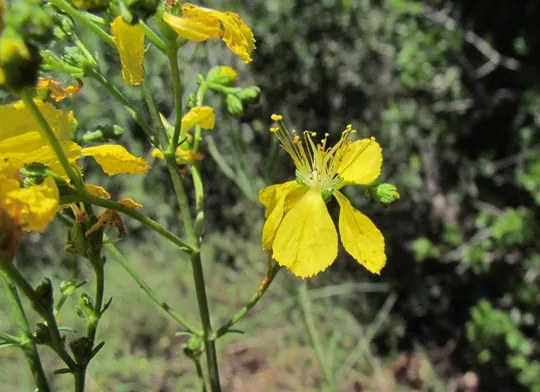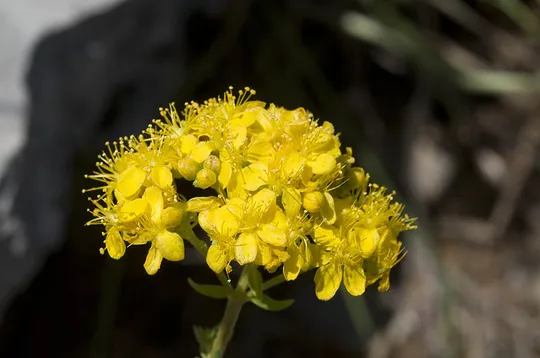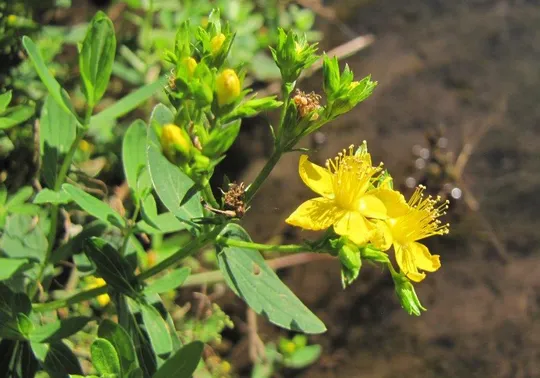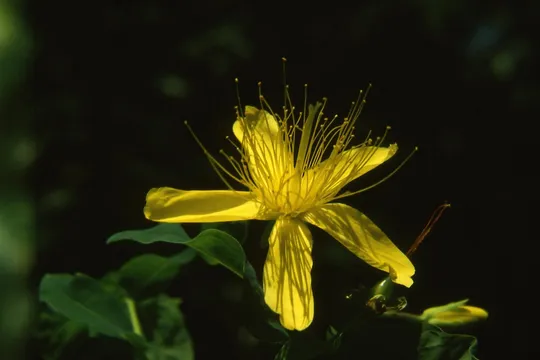Hypericum perforatum
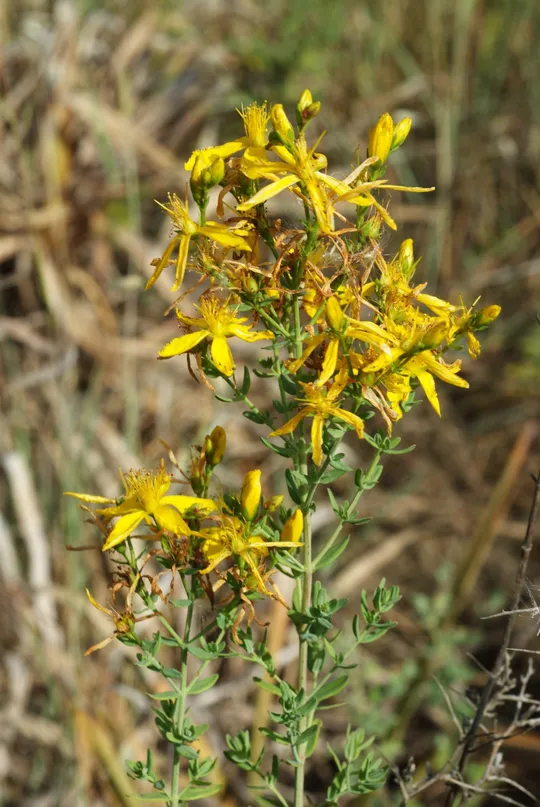
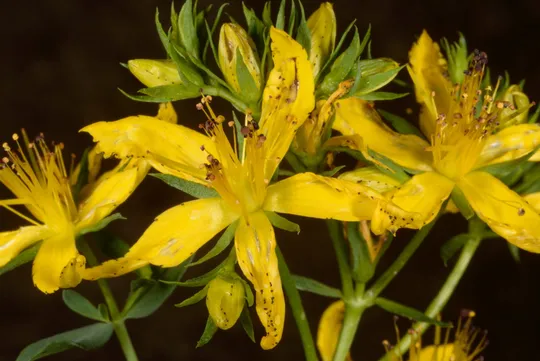
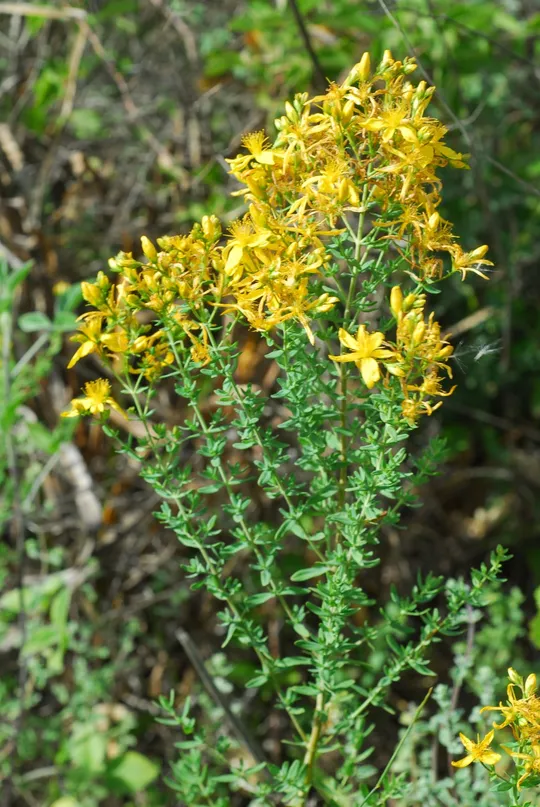
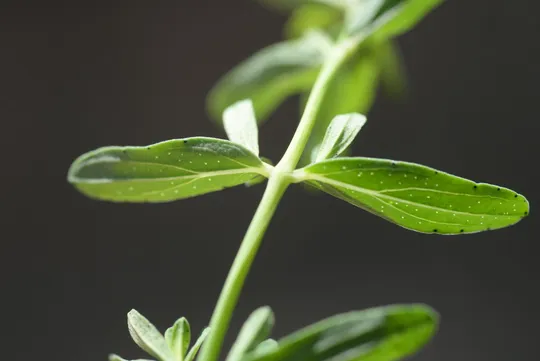
Extracts made from the
leaves of Hypericum perforatum are used in herbal medicine for treating
depression. The species is used in herbal medicine to treat many other diseases
as well, although it is toxic to sheep and cattle.
Hypericum perforatum is found in the
Hula Valley, the northern Golan Heights and the Mount Hermon foothills at eight
documented sites, although there are an estimated ten sites. In the Hula Valley,
it is found in Sahlavim Nature Reserve in Hurshat Tal National Park, in the Hatsbani
and En Dan. In northern Golan Heights, it grows on three sites in the area of the
Odem Forest and at the Banias. In the lower Hermon, it is found in the Yafori
valley.
In Israel Hypericum perforatum appears in two completely different habitats: grassy areas on spring
margins and open woodland.
The genus Hypericum consists of about 370 species
that grow in tropical and temperate areas and includes trees, shrubs and
herbaceous species. All the species in the genus have typical ethereal oil glands that dot both sides of the leaf. Some species are used as
ornamental plants and medicinal herbs. There are another nine Hypericum
species growing in different habitats in Israel.
H.
perforatum belongs to the Hypericum section that has characteristic black
glands that are always found on the stems, leaves and stamen filaments but not
consistently on the sepals and on the petals. In Israel,
there are three species in this section: H. triquetrifolium, H.
perforatum and H. tetrapterum.
H. tetrapterum has
four protruding ribs
along the stem, but the two other species have only two ribs along the stem. H.triquetrifolium has leaves with undulate margins
whereas H. perforatum leaves have entire margins.
Moreover, the inflorescence of H. triquetrifolium is spherical while that of H. perforatum is elongated and the entire plant is erect. H.
perforatum and H.
quadrangulum are
rare plants of moist habitats while H. triquetrifolium is a noxious weed more common in
Israel's Mediterranean region. Another species in the genus, H.
amblysepalum although not close to H. perforatum is
superficially very similar
to it, particularly in its erect appearance and abundant flowers. It differs
from H. perforatum by its dentate, not entire, sepals.
H. amblysepalum is a rare plant that grows
in forest and woodland clearings in the Galilee, which also appears in the deep
soils of the Jezreel Valley. The species is not included in the Red Book
because it grows on many sites, and the fact that its populations have not
decreased in recent decades.
·
Some of the Hypericum perforatum sites are accessible
and are threatened by agricultural development. The small population size
constitutes a demographic threat. Its habitat – wetlands – is threatened by
desiccation and pollution due to the decrease in groundwater levels caused by
over-pumping.
·
H. perforatum is protected in
the Hurshat Tal and Mas’ada Forest reserves.
·
The species has a broad global
distribution and is not globally endangered.
Additional
surveys are needed to confirm the information regarding its distribution sites
in the Hula Valley and the Golan Heights and to monitor the populations found. A
site should be demarcated in HurshatTal and the Hula Valley where H. perforatum will be
protected. Cuttings should be made to propagate the species in refuge gardens
and in gardens in the reserves in which it grows.
Hypericum perforatum is found
throughout Europe including the British Isles and North Africa, the Azores Archipelago,
the Madeira Islands and western Asia. It was brought into many areas of the
world and spread in the wild. In some countries, it is considered a noxious weed
and an invasive species.
Hypericum
perforatum is
a rare herbaceous perennial species that grows on vulnerable sites. The species
grows in many parts of the world and used as a medicinal herb; it is not globally
endangered.
ליסטון, א. 1985. צמחים חדשים לארץ מן החרמון וצפון הגולן. רתם 16: 41-45.
Current Occupancy Map
| 1000 squre meter pixel | 5000 squre meter pixel | 10000 squre meter pixel | |
|---|---|---|---|
| number of observations | 0 | 0 | 0 |
| in total pixels | 0 | 0 | 0 |
| Family | Clusiaceae |
| Classification | On the endangered species list |
| Ecosystem | Mediterranean |
| Chorotype | Euro-Siberian (Mediterranean) |
| Conservation Site | Sahlavim Reserve of Hurshat Tal, Tel Dan, Snir Stream |
| Rarity |
1
3
6
|
|---|---|
| Vulnerability |
0
2
4
|
| Attractiveness |
0
0
4
|
| Endemism |
0
0
4
|
| Red number |
1
3.2
10
|
| Peripherality | N |
| IUCN category | DD EW EX LC CR EN VU NT |
| Threat Definition according to the red book | Vulnerable |
 Based on:
Based on:
